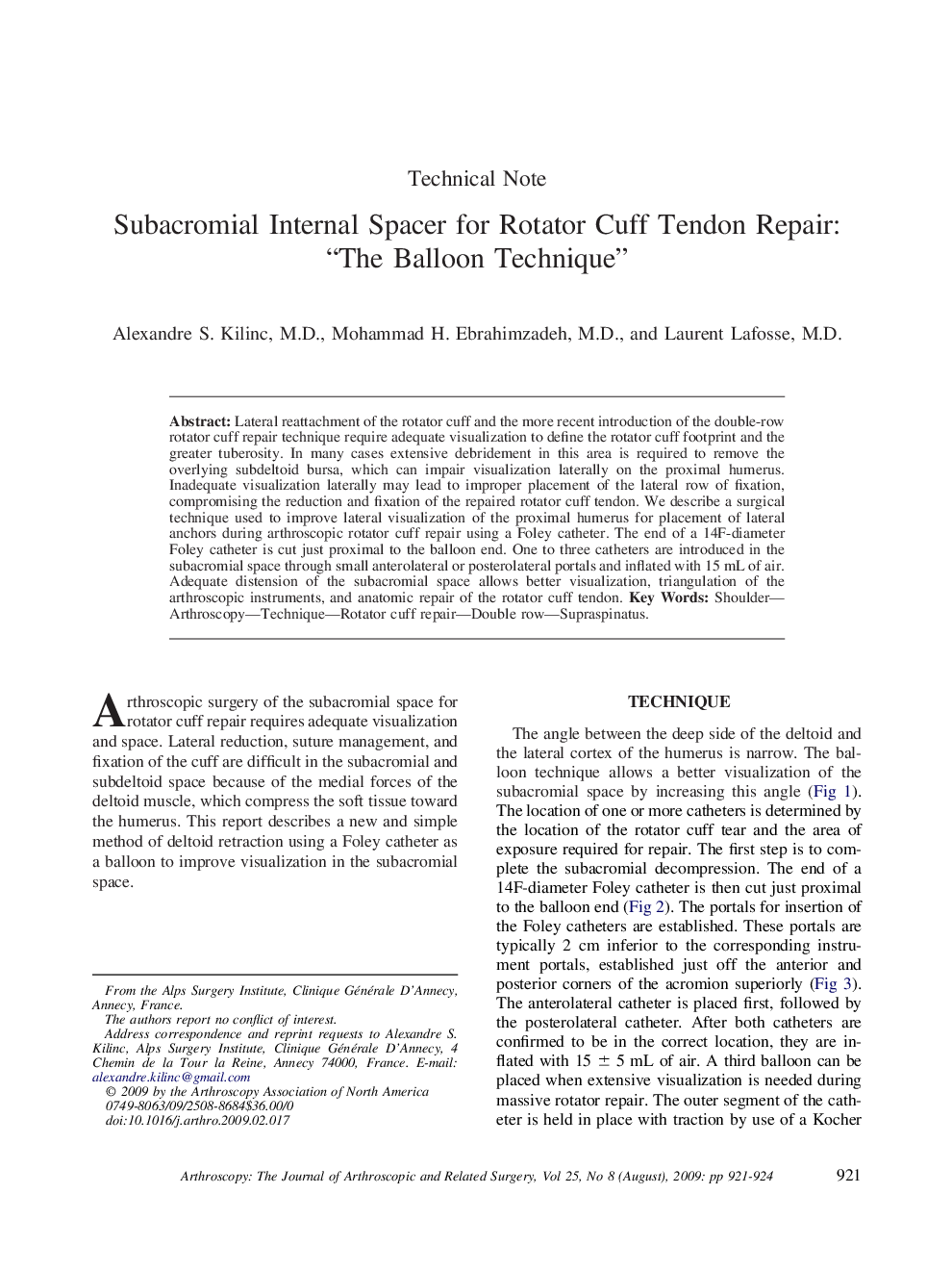| Article ID | Journal | Published Year | Pages | File Type |
|---|---|---|---|---|
| 4046683 | Arthroscopy: The Journal of Arthroscopic & Related Surgery | 2009 | 4 Pages |
Lateral reattachment of the rotator cuff and the more recent introduction of the double-row rotator cuff repair technique require adequate visualization to define the rotator cuff footprint and the greater tuberosity. In many cases extensive debridement in this area is required to remove the overlying subdeltoid bursa, which can impair visualization laterally on the proximal humerus. Inadequate visualization laterally may lead to improper placement of the lateral row of fixation, compromising the reduction and fixation of the repaired rotator cuff tendon. We describe a surgical technique used to improve lateral visualization of the proximal humerus for placement of lateral anchors during arthroscopic rotator cuff repair using a Foley catheter. The end of a 14F-diameter Foley catheter is cut just proximal to the balloon end. One to three catheters are introduced in the subacromial space through small anterolateral or posterolateral portals and inflated with 15 mL of air. Adequate distension of the subacromial space allows better visualization, triangulation of the arthroscopic instruments, and anatomic repair of the rotator cuff tendon.
